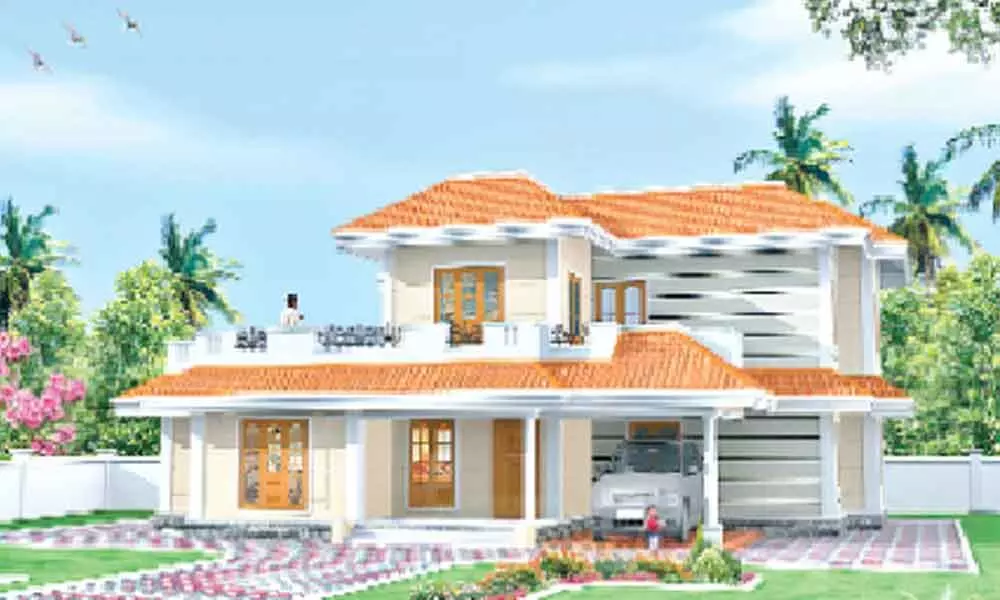Live
- Celta Vigo extend all-time club top-scorer Iago Aspas’ contract till 2026
- BGT: Kaif gives preference to Jaiswal-Rahul opening pair for Boxing Day Test against Australia
- Odisha CM Majhi, Naveen Patnaik extend Christmas greetings
- Icebreaker Keyboard: AluminIum Design Costing as Much as a MacBook Pro
- ‘Rifle Club’ Movie Review: A Stylish Thriller That Falls Short in Storytelling
- Chennai to Experience Heavy Rain as Severe Low-Pressure System Approaches Coastal Areas
- Pradeep’s ‘Akkada Ammayi Ikkada Abbayi’ hypes up with energetic new song
- Dil Raju releases ‘Adi Dha Saaru’ song from ‘Sahakutumbanam’
- GTA 5 Online Car Duplication Glitch: How to Duplicate Cars for Money (2024)
- 'Srikakulam Sherlock Holmes' Review: A quirky thriller thay doesn’t impress
Just In
Green shoots visible in real estate sector


Green shoots visible in real estate sector
The Covid-19 pandemic affected the residential property market during the April-June period last year, but sales have improved in affordable homes segment since July onwards, reflecting economic recovery in the real estate sector, according to the Economic Survey.
New Delhi: The Covid-19 pandemic affected the residential property market during the April-June period last year, but sales have improved in affordable homes segment since July onwards, reflecting economic recovery in the real estate sector, according to the Economic Survey.
The National Housing Bank's (NHB) Housing Price Indices (HPIs) are a broad measure of movement of residential property prices observed within a geographic boundary. The NHB-RESIDEX captures two housing price indices - HPI@ Assessment Prices and HPI@ Market Prices - Under Construction Properties based on the data available for 50 cities with quarterly updation.
The housing price index HPI @ Assessment Prices is based on valuation data collected from primary lending institutions, while HPI @ Market Prices for under construction properties primary and secondary data is collected through market survey.
"The total number of transactions for HPI@Assessment Price reduced by 71 per cent from March 20 to June 20 on Q-o-Q (Quarter-on-Quarter) basis while on Year-on-Year basis transactions reduced by 67 per cent from June 2019 to June 2020, indicating that Covid-19 crisis has significantly impacted the residential real estate market. New listings were down significantly and buyers also reduced their home buying activity," the survey said.
However, during the quarter July to September 2020, transactions for HPI@Assessment Prices have increased by around 150 per cent on Q-o-Q basis. "...thus, it is observed that sales have retrieved in affordable segments, reflecting economic recovery in the real estate sector," the document said. Moreover, the survey revealed that housing loans growth decelerated to 8.5 per cent in November 2020 from 18.3 per cent a year ago.
A significant fall has been observed in housing inflation from 6.7 per cent in 2018-19 to 4.5 per cent in 2019-20 and further to 3.3 per cent in 2020-21 (April-December). Giving update about the Pradhan Mantri Awaas Yojana (PMAY), which seeks to provide housing for all in urban and rural areas by 2022, the survey mentioned that under PMAY (Urban), as on January 18, 2021, 109.2 lakh houses have been sanctioned.
Out of these, 70.4 lakh houses have been grounded for construction, of which 41.3 lakh have been built to the beneficiaries under PMAY(U) since inception of the scheme in June 2015. The target number of houses for construction under PMAY (Gramin) is 2.95 crore in two phases i.e. 1 crore in Phase I (2016-17 to 2018-19) and 1.95 crore in Phase II (2019-20 to 2021-22). Since 2014-15, construction of about 1.94 crore rural houses have been completed, out of which 1.22 crore houses have been constructed under the revamped scheme of PMAY-G and 0.72 crore under erstwhile Indira Awaas Yojana scheme. The Economic Survey highlighted that the access to housing has improved in all states, with some exception, helped by schemes like the PMAY.
"The access to housing has improved in all States, except urban areas in few States. The inter-state disparities have also declined as the States having low level in 2012 have gained more. However, the gaps in the levels across states have been large, especially in rural areas," the document said.
The improvement in access to housing has been disproportionately greater for the lowest income group when compared to the highest income group, thereby enhancing equity in access to housing in 2018 vis-a-vis 2012. Under the Aatmanirbhar Bharat Abhiyan, the survey said that the government last year announced various measures to give a boost to the real estate sector, such as the extension of registration and completion date of real estate projects under Real Estate (Regulation and Development) Act (RERA). The Ministry of Housing and Urban Affairs advised states/UTs and their regulatory authorities to treat Covid-19 as an event of 'Force Majeure' under RERA. These measures were aimed at de-stressing real estate developers and ensuring completion of projects, the document said.

© 2024 Hyderabad Media House Limited/The Hans India. All rights reserved. Powered by hocalwire.com






